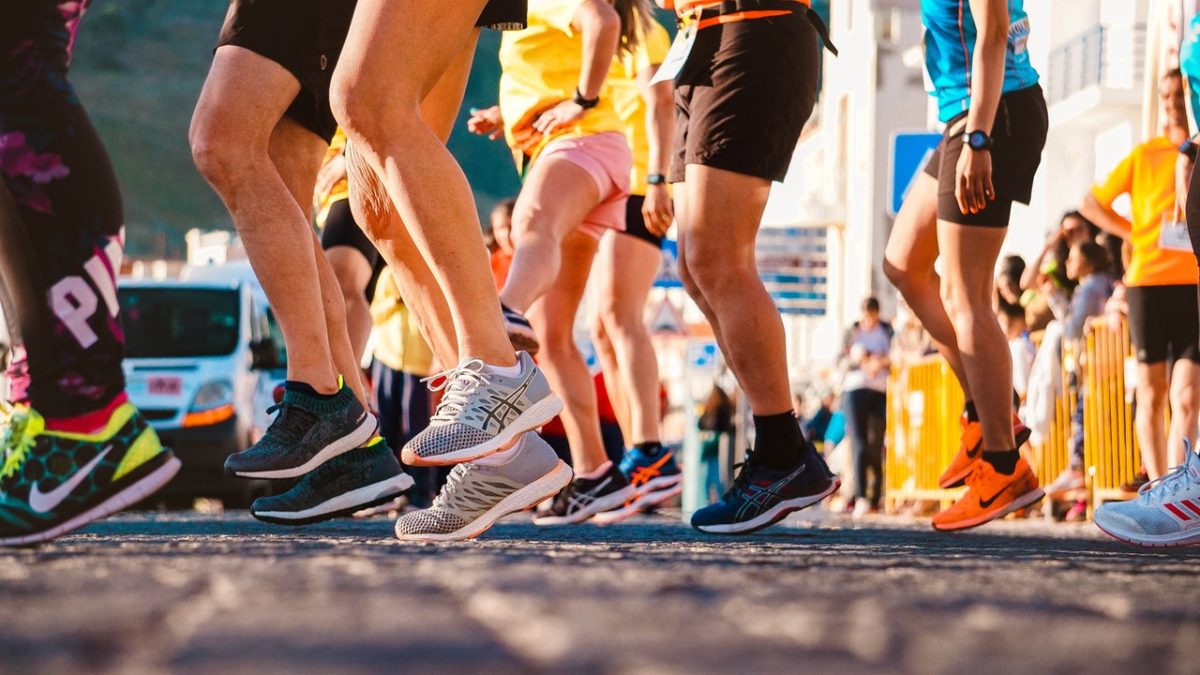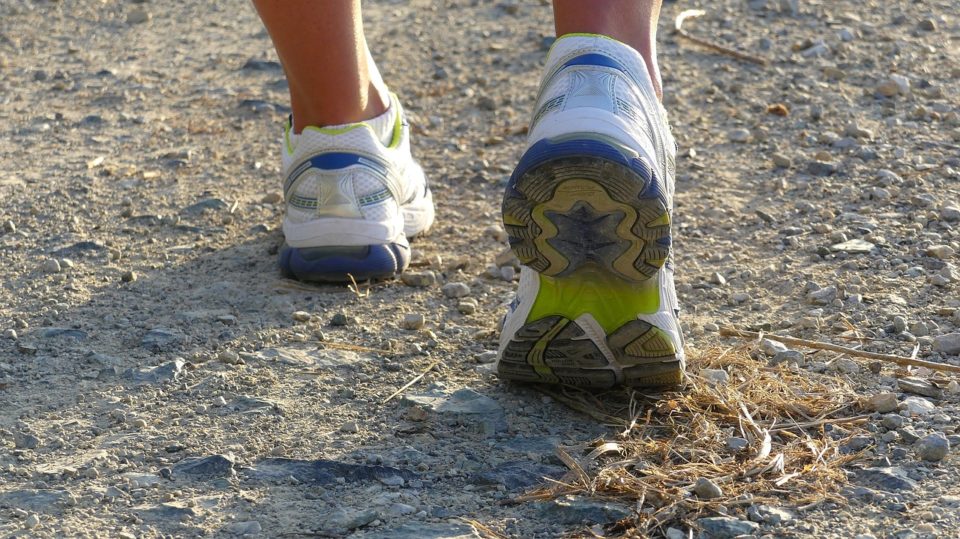
Running is liberating and that’s precisely what your ideal running shoes should be too. The perfect fit and great support, leaving you nothing to worry about ? Well-fitting running shoes are essential if you are a runner. But what exactly does ‘well’ mean to you? In this post, we take a look at what you should be looking out for when it comes to choosing the right running shoes for you, as well as giving you a few more tips and tricks.
Why do you need good running shoes?
A good pair of supportive running shoes are essential tools of the trade for any runner. We all know from experience the problems that bad running shoes can cause. Running places four times as much strain on the joints and feet as walking does, which makes it all the more important to wear good running shoes that fit properly. Why? Because good running shoes:
- absorb the energy of impact
- support the foot as it does its job
- guide the foot
- guarantee a clean roll-off
A good running shoe should also use high-quality materials to keep your feet feeling fresh and comfortable. Wearing bad or unsuitable running shoes, on the other hand, can not only cause blisters and chafing and put excessive strain on the foot, but in extreme cases can even cause fatigue fractures and torn tendons or ligaments.
So it’s clear that the right pair of running shoes can not only improve your running performance, but it also vastly reduces your risk of injury.
What to look out for when you’re shopping
Your running shoes should fit as though they were made for you. The key parameters are always important, of course: Gender, weight, and alignment of the legs. After all, these factors have a major influence on your running style and consequently on which shoes will suit you best. It goes without saying that you also need to know your exact foot type. Whatever you do, you should ALWAYS try your running shoes on before you buy them. Your feet will be different depending on the time of day, especially in the early morning or evening. Over the course of the day, your feet expand by up to 4% and may even become slightly narrower or wider.
To test which potential running shoe is right for you, it is a good idea to ask the following three questions when you try them on:
- Is the shoe wide enough? It should be sufficiently wide to allow your foot to rest comfortably on the last and on the whole of the inner sole. As a general rule, there should be a thumb’s width of space to the front of your big toe when you are standing. And although your toes should be almost at the edge of the shoe on both sides, they should still have a little room. Your ankle should not touch the side of the shoe either.
- What is the fit like around your midfoot? The shoe should fit snugly here and provide support without pinching. You can also take a closer look at the lacing to see if it offers adequate support.
- What about the heel? Ideally, the right running shoe will surround your heel without pressing or rubbing. After all, we want to avoid blisters and chafing at all costs. Always bear in mind the shape of your foot and your personal preferences, as you may want a sturdier or softer heel, depending on your foot type. Try both and see what feels better.
If you’re buying your shoes in a high-street store, just ask for advice in-store and try the shoes out on a foot scanner. If you’re shopping online, it’s worth having an online advisor to assist you. That way if you’re not sur, you can ask for a recommendation.
Which running shoe is best for my running gait?
You may find that certain running shoe fits or types of cushioning suit you better depending on your running gait – in other words, how your foot strikes the ground. Some runners tend to roll their feet inwards (pronation, or overpronation), for example, while others have an outward roll (supination, or underpronation).
How can I tell if I am a pronator or a supinator?
Look at the underside of your old running shoes. Do they have a normal wear pattern or is there more pronounced wear on the inside or outside? If so, you may need to take another look at what kind of gait you have or, even worse, what kind of symptoms you are suffering from, and then choose your shoes based on the way you run.
Pronation
If your foot is not very stable and rolls inwards at the ankle, you will need what is known as a ‘stability shoe’ or ‘pronation shoe’, which helps prevent the foot from rolling inwards, or overpronating.
Supination
If you essentially have problems with sliding back and forth, you need a ‘supination shoe’, which will give you the support you need along the outer edge. This type of pronation, also known as underpronation, dictates how the shoe should feel between the ball of the foot and the heel.
Why cushioning is vital

Cushioning, or shock absorption, is the most important feature in a good running shoe, and the more miles you run, the more important the cushioning will become for you. Cushioning refers to the shoe’s ability to reduce the impact on hard surfaces (asphalt, concrete, etc.), thereby minimizing the amount of stress on the body and, with it, the risk of injury.
That said, no two types of cushioning are the same. For one thing, as you train more, you may find you need a different type of cushioning than you did when you started out. As a general rule, and especially at the beginning, it is a good idea to choose running shoes that offer more cushioning. A higher level of shock absorption is also recommended for the following scenarios:
- Overweight
- Low level of training
- Training on hard surfaces (asphalt, well-trodden nature trails, etc.)
- Getting back into running
- Flat feet or high arches
- Pain from pronation or supination
- Long distances (over 10 km)
Yet striving for maximum cushioning can have its disadvantages as well. Excessive cushioning due to an extra-thick sole can lead to problems, especially with the knee joint, for example:
- Reduced flexibility of the foot in the running shoe
- More pronounced heel region – increased impact – straighter leg in the landing phase and thus higher load on the knees
- Less efficient training
So now we know why we need good running shoes, what to bear in mind when shopping, why your gait matters, and what makes cushioning so important. All that’s left is for us to wish you lots of luck on your shopping trip! And don’t forget, even a good pair of running shoes will need to be broken in and laced correctly if you want to avoid blisters and chafing. And remember to look after your feet and use pjuractive 2SKIN to keep your toes blister-free ?